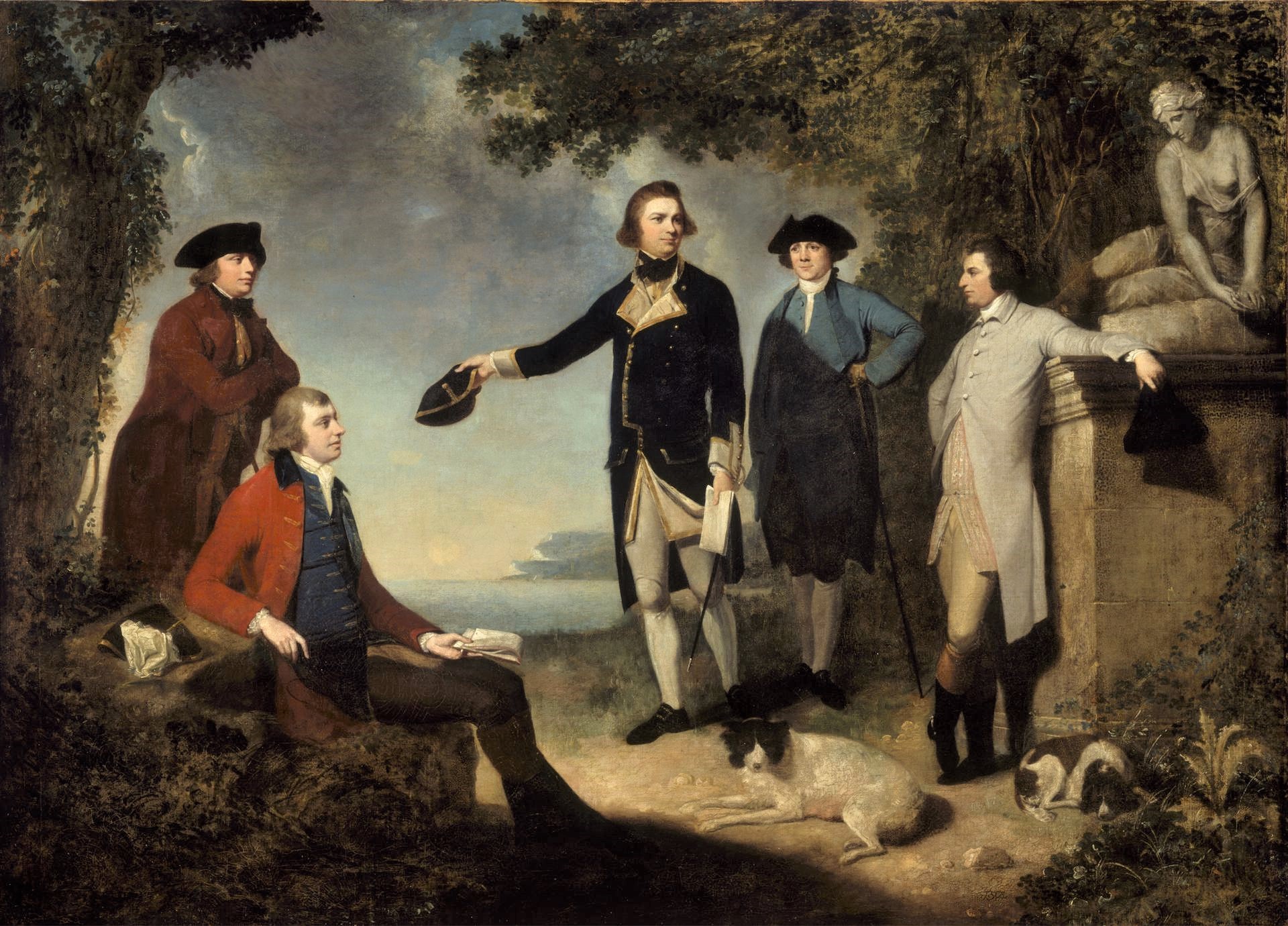
The Apostles of Linnaeus were a group of students who carried out
botanical
Botany, also called , plant biology or phytology, is the science of plant life and a branch of biology. A botanist, plant scientist or phytologist is a scientist who specialises in this field. The term "botany" comes from the Ancient Greek wo ...
and
zoological
Zoology ()The pronunciation of zoology as is usually regarded as nonstandard, though it is not uncommon. is the branch of biology that studies the animal kingdom, including the structure, embryology, evolution, classification, habits, and dis ...
expeditions throughout the world that were either devised or approved by botanist
Carl Linnaeus
Carl Linnaeus (; 23 May 1707 – 10 January 1778), also known after his Nobility#Ennoblement, ennoblement in 1761 as Carl von Linné#Blunt, Blunt (2004), p. 171. (), was a Swedish botanist, zoologist, taxonomist, and physician who formalise ...
. The expeditions took place during the latter half of the 18th century and the students were designated '
apostles' by Linnaeus.
[Blunt, Wilfrid (2004). pp. 173–174.]
Many apostles began their journey from Sweden. Some would act as chaplains or doctors aboard a
Swedish East India Company
The Swedish East India Company ( sv, Svenska Ostindiska Companiet or ''SOIC'') was founded in Gothenburg, Sweden, in 1731 for the purpose of conducting trade with China and the Far East. The venture was inspired by the success of the Dutch East ...
ship. The expeditions were often dangerous. Seven of the seventeen apostles never came home. The first apostle, Christopher Tärnström, died of a tropical fever on
Côn Sơn Island in 1746. Tärnström's widow was angry with Linnaeus for making her children fatherless. After this incident, Linnaeus sent only unmarried men.
Linnaeus remained involved in most expeditions. He often left notes for the apostles and outlined what they should look for during their journeys, and the apostles sent letters and botanical samples to Linnaeus. Upon their return, it was usual to give Linnaeus a selection of anything collected. However,
Daniel Rolander Daniel Rolander (1722/3 – 10 August 1793) was a Swedish biologist and an apostle of Carl Linnaeus.
Rolander was born to a simple family in Hälleberga, Småland, Sweden and studied at Uppsala University where he came under the influence of Lin ...
elected not to transfer his collection and was criticised by Linnaeus.
Many newly discovered plants, animals and insects were named and catalogued by Linnaeus and apostles. As a result, the apostles' expeditions helped spread the
Linnaean taxonomy
Linnaean taxonomy can mean either of two related concepts:
# The particular form of biological classification (taxonomy) set up by Carl Linnaeus, as set forth in his ''Systema Naturae'' (1735) and subsequent works. In the taxonomy of Linnaeus t ...
, a system for classifying organisms. Additionally, one of Linnaeus' admirers, the English botanist
Joseph Banks, was inspired to begin the tradition for all British research ships to have a naturalist aboard. Thus the apostles had a direct influence on future expeditions such as
Charles Darwin
Charles Robert Darwin ( ; 12 February 1809 – 19 April 1882) was an English naturalist, geologist, and biologist, widely known for his contributions to evolutionary biology. His proposition that all species of life have descended ...
's expedition aboard
HMS ''Beagle''.
[Blunt, Wilfrid (2004). p. 184.]
Origins
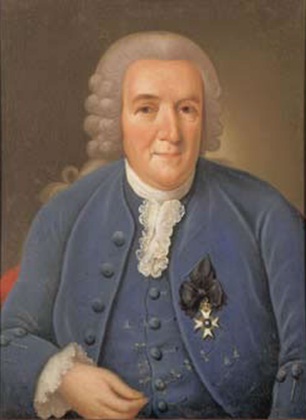
Carl Linnaeus
Carl Linnaeus (; 23 May 1707 – 10 January 1778), also known after his Nobility#Ennoblement, ennoblement in 1761 as Carl von Linné#Blunt, Blunt (2004), p. 171. (), was a Swedish botanist, zoologist, taxonomist, and physician who formalise ...
was born in
Råshult,
Småland, Sweden on 23 May 1707.
[Blunt, Wilfrid (2004). p. 12.] Linnaeus enrolled at
Uppsala University
Uppsala University ( sv, Uppsala universitet) is a public research university in Uppsala, Sweden. Founded in 1477, it is the oldest university in Sweden and the Nordic countries still in operation.
The university rose to significance during ...
to study botany and medicine in 1728.
[Blunt, Wilfrid (2004). pp. 23–25.] Following his studies, he went to the Netherlands to study medicine.
[Blunt, Wilfrid (2004). p. 94.] While in the Netherlands, he published ''
Systema Naturae'' that describes a new system for classifying plants.
[Blunt, Wilfrid (2004). p. 98.]
Linnaeus returned to Sweden in May 1741 and was appointed Professor of Medicine at
Uppsala University
Uppsala University ( sv, Uppsala universitet) is a public research university in Uppsala, Sweden. Founded in 1477, it is the oldest university in Sweden and the Nordic countries still in operation.
The university rose to significance during ...
. Nine years later he became the university's rector, starting a period where natural sciences were held in the greatest esteem.
Perhaps the most important contribution Linnaeus made during his time in Uppsala was as a teacher. His lectures were normally full and often held in the Botanical Garden. He taught students to think for themselves and not trust anybody. The Saturday botanical excursions during summer were more popular than his lectures. Linnaeus and students explored the flora and fauna in the vicinity of Uppsala.
Additionally, he let some of the best students live with him at his house.
[Blunt, Wilfrid (2004). pp. 172–173.]
Among
Linnaeus' notable students, the most promising and committed ones made botanical expeditions to various places in the world, often with the help of their professor. These seventeen adventurers were referred to as Linnaeus' apostles.
[Mary and John Gribbin (2008). pp. 56–57.] The amount of this help varied; sometimes he used his influence as Rector to grant his apostles a place on an expedition or a scholarship.
[Blunt, Wilfrid (2004). pp. 189–190.] Most apostles were given instructions of what to find during their journeys. The apostles collected, organised and classified new plants, animals and minerals according to Linnaeus' classification system. Most gave their collections to Linnaeus when their journey finished.
[Broberg, Gunnar (2006). pp. 37–39.]
The Apostles
Christopher Tärnström, China (1746)
Christopher Tärnström (1703–1746) was the first apostle. Linnaeus permitted Tärnström to conduct a botanical expedition in China. In early 1746, Tärnström received free passage on the
Swedish East India Company
The Swedish East India Company ( sv, Svenska Ostindiska Companiet or ''SOIC'') was founded in Gothenburg, Sweden, in 1731 for the purpose of conducting trade with China and the Far East. The venture was inspired by the success of the Dutch East ...
ship ''Calmar'' to China. He took a list, written by Linnaeus, of things to collect which included plants, animals and insects. However, ''Calmar'' stopped sailing beyond
Côn Sơn Island (off the modern-day Vietnamese coast) because it had been forced to find a winter berth.
[Mary and John Gribbin (2008). p. 57.] On 4 December 1746, Tärnström died of a tropical fever without a botanical or zoological specimen having been sent to Sweden.
[Stöver, Dietrich Johann Heinrich (1794). p. 174.] His widow blamed Linnaeus for making her children fatherless. Following the death of Tärnström, Linnaeus allowed only unmarried men to become his apostles.
[Blunt, Wilfrid (2004). pp. 185–186.]
Pehr Kalm, North America (1747–1751)
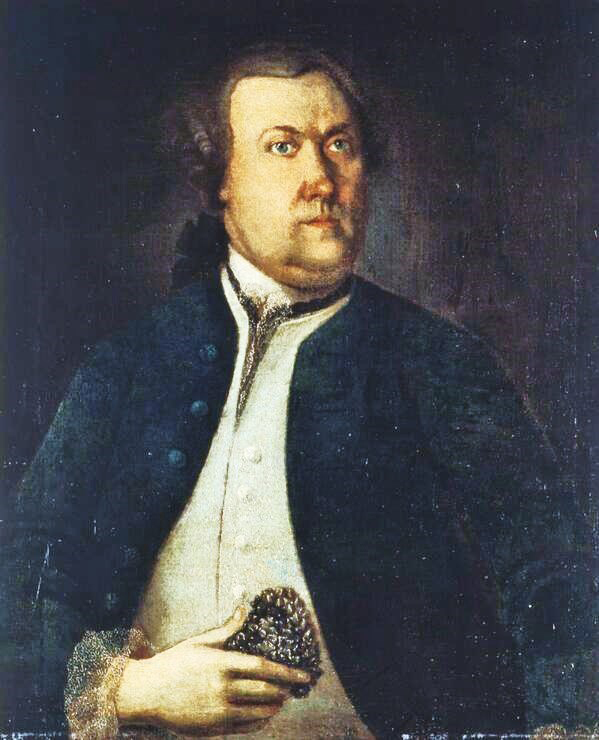
Pehr Kalm
Pehr Kalm (6 March 1716 – 16 November 1779), also known as Peter Kalm, was a Swedish explorer, botanist, naturalist, and agricultural economist. He was one of the most important apostles of Carl Linnaeus.
In 1747, he was commissioned by the ...
(1715–1779) was born in Sweden to Finnish parents and became a student of Linnaeus in December 1740. He proposed to Linnaeus that he travel to North America on a botanical expedition. Linnaeus concurred and in November 1747 Kalm began his journey to North America sponsored by the universities in Uppsala and
Åbo
Turku ( ; ; sv, Åbo, ) is a city and former capital on the southwest coast of Finland at the mouth of the Aura River, in the region of Finland Proper (''Varsinais-Suomi'') and the former Turku and Pori Province (''Turun ja Porin lääni''; ...
. After a long stay in England, on the way he reached Philadelphia in autumn 1748. Once there, he stayed in North America for two and a half years, visiting the states of Pennsylvania, New Jersey, New York and southern Canada. He then returned to Sweden. Kalm is one of the few apostles who actually lived up to Linnaeus' hopes; bringing with him a large collection of pressed plants and seeds. His travel experience was later published in a three-volume book, ''En resa til Norra America''.
[Blunt, Wilfrid (2004). p. 186.][Fagerstedt and Sörlin (2004). pp. 58–62.][Stöver, Dietrich Johann Heinrich (1794). p. 181.]
Fredric Hasselquist, Izmir, Egypt etc. (1749–1752)
Fredric Hasselquist (1722–1752) heard Linnaeus talking about the botanically unexplored
Eastern Mediterranean and he was inspired to travel there. Hasselquist was poor and to make the expedition possible, he relied on sponsorships from Linnaeus and
Olof Celsius
Olof Celsius (the elder) (19 July 1670 – 24 June 1756) was a Swedish botanist, philologist and clergyman, He was a professor at Uppsala University, Sweden. Celsius was a mentor of the botanist and scientist Carl Linnaeus. Celsius wrote his most ...
. On 7 August 1749, Hasselquist sailed from
Stockholm to Izmir (a city in
Turkey
Turkey ( tr, Türkiye ), officially the Republic of Türkiye ( tr, Türkiye Cumhuriyeti, links=no ), is a transcontinental country located mainly on the Anatolian Peninsula in Western Asia, with a small portion on the Balkan Peninsula in ...
) where he spent the winter. Subsequently, he sailed to Egypt where stayed for ten months before returning. On the way he passed:
Syria;
Cyprus
Cyprus ; tr, Kıbrıs (), officially the Republic of Cyprus,, , lit: Republic of Cyprus is an island country located south of the Anatolian Peninsula in the eastern Mediterranean Sea. Its continental position is disputed; while it is ge ...
;
Rhodes
Rhodes (; el, Ρόδος , translit=Ródos ) is the largest and the historical capital of the Dodecanese islands of Greece. Administratively, the island forms a separate municipality within the Rhodes regional unit, which is part of the S ...
; and
Chios
Chios (; el, Χίος, Chíos , traditionally known as Scio in English) is the fifth largest Greek island, situated in the northern Aegean Sea. The island is separated from Turkey by the Chios Strait. Chios is notable for its exports of masti ...
. He returned to Izmir with a rich collection of botanical and zoological findings and also minerals. On 9 February 1752, he died before returning to Sweden. During his expedition he accumulated a large debt and Linnaeus was informed that Hasselquist's collections and manuscripts would not be sent home until the debt was paid. Swedish Queen
Louisa Ulrika paid the debt and Linnaeus received Hasselquist's findings. In 1757, Linnaeus published ''Iter Palaestinium'' based on Hasselquist's collections and manuscripts.
[Blunt, Wilfrid (2004). pp. 186–187.][Frängsmyr et al. (1983). pp. 54–55.][Stöver, Dietrich Johann Heinrich (1794). pp. 175–176.]
Olof Torén, Surat and Guangzhou (1750)
Olof Torén (1718–1753) travelled to
Surat and India as a priest with the Swedish East India Company in 1750. He continued to
Guangzhou
Guangzhou (, ; ; or ; ), also known as Canton () and alternatively romanized as Kwongchow or Kwangchow, is the capital and largest city of Guangdong province in southern China. Located on the Pearl River about north-northwest of Hong Kon ...
(Canton) and China before returning to Sweden. During his journey, he corresponded with Linnaeus; these letters were published posthumously as an appendix in the travelogue of another apostle, Pehr Osbeck. He fell ill during his journey and died shortly after his return in 1753. He returned with a large collection of specimens.
[Fagerstedt and Sörlin (2004). p. 53.][Stöver, Dietrich Johann Heinrich (1794). p. 182.]
Pehr Osbeck, China (1750–1752)

Pehr Osbeck
Pehr Osbeck (1723 – 23 December 1805) was a Swedish explorer, naturalist and an apostle of Carl Linnaeus. He was born in the parish of Hålanda on Västergötland and studied at Uppsala with Carolus Linnaeus.
Naturalist in Canton
In 1750� ...
(1723–1805) sailed from
Göteborg
Gothenburg (; abbreviated Gbg; sv, Göteborg ) is the second-largest city in Sweden, fifth-largest in the Nordic countries, and capital of the Västra Götaland County. It is situated by the Kattegat, on the west coast of Sweden, and has a p ...
to China in 1750 on ship ''Prins Carl''. His primary task was to collect a tea plant for Linnaeus. He spent four months in
Guangzhou
Guangzhou (, ; ; or ; ), also known as Canton () and alternatively romanized as Kwongchow or Kwangchow, is the capital and largest city of Guangdong province in southern China. Located on the Pearl River about north-northwest of Hong Kon ...
where he collected many plants, but not the tea plant. He returned to Sweden in June 1752 with his collection and several other objects which he gave to Linnaeus.
[Blunt, Wilfrid (2004). pp. 187–188.][Fagerstedt and Sörlin (2004). pp. 52–53.][Mary and John Gribbin (2008). pp. 57–58.]
Pehr Löfling, Spain and Venezuela (1751–1756)
Pehr Löfling
Pehr Löfling (31 January 1729 – 22 February 1756) was a Swedish botanist and an apostle of Carl Linnaeus.
Biography
Löfling was born in Tolvfors Bruk, Gävle, Sweden. He studied at the University of Uppsala where he attended courses taugh ...
(1729–1756) was recommended by Linnaeus when the Spanish ambassador in Stockholm asked for help exploring Spanish flora. Löfling travelled to
Madrid
Madrid ( , ) is the capital and most populous city of Spain. The city has almost 3.4 million inhabitants and a Madrid metropolitan area, metropolitan area population of approximately 6.7 million. It is the Largest cities of the Europ ...
in 1751 where he stayed for approximately two years. He explored the flora and fauna and regularly sent plants to Linnaeus. In 1754 the Spanish organised an expedition to South America and Löfling was invited to join them. They first stopped in the
Canary Islands, staying for a short time before continuing to
Venezuela
Venezuela (; ), officially the Bolivarian Republic of Venezuela ( es, link=no, República Bolivariana de Venezuela), is a country on the northern coast of South America, consisting of a continental landmass and many islands and islets in th ...
. In Venezuela, Löfling collected plants with the help of his two assistants. Löfling stayed in South America until his death on 22 February 1756 in Guyana.
[Stöver, Dietrich Johann Heinrich (1794). pp. 178–179.]
Daniel Rolander, Suriname (1755)
Daniel Rolander Daniel Rolander (1722/3 – 10 August 1793) was a Swedish biologist and an apostle of Carl Linnaeus.
Rolander was born to a simple family in Hälleberga, Småland, Sweden and studied at Uppsala University where he came under the influence of Lin ...
(1725–1793) followed Linnaeus' acquaintance, Carl Gustav Dahlberg, to
Suriname in 1755. Although he became ill on the way, he had almost recovered by the time he arrived. In Suriname he tried to explore the rainforests but disliked the climate. He developed an alcohol addiction and his health began to decline. He stayed for seven months and then returned with a collection containing plants and insects. He did not, however, give anything from his collection to Linnaeus. This is reported to have made Linnaeus "furious". Linnaeus, determined to acquire parts of Rolander's collection, broke into Rolander's home and reportedly stole a ''
Sauvagesia'' plant. This incident ended the relationship between the two men and Linnaeus was heard to speak ill of Rolander on several occasions.
[Fagerstedt and Sörlin (2004). pp. 104–115.]
Anton Rolandsson Martin, Spitsbergen (1758)
Anton Rolandsson Martin (1729–1785) was born in what is now Estonia and later came to Sweden to be taught by Linnaeus. Linnaeus helped Martin get a small grant from Sweden's
Royal Academy of Sciences to go to
Spitsbergen, an island in the Arctic Ocean. In 1758, Martin joined a whaling expedition to the island but was only able to get ashore a few hours. He managed to bring back
mosses and
lichen. Despite how few samples he was able to bring back, Martin's expedition gained Linnaeus' praise.
[Fagerstedt and Sörlin (2004). p. 95.]
Carl Fredrik Adler, East Indies, China and Java (c. 1761)
Carl Fredrik Adler (1720–1761) sailed to the East Indies in 1761 on a
Swedish East India Company
The Swedish East India Company ( sv, Svenska Ostindiska Companiet or ''SOIC'') was founded in Gothenburg, Sweden, in 1731 for the purpose of conducting trade with China and the Far East. The venture was inspired by the success of the Dutch East ...
ship. He also visited China and
Java
Java (; id, Jawa, ; jv, ꦗꦮ; su, ) is one of the Greater Sunda Islands in Indonesia. It is bordered by the Indian Ocean to the south and the Java Sea to the north. With a population of 151.6 million people, Java is the world's mos ...
on the same expedition. His journey was short. He died later in the year of his departure while still in Java. However, before his death he had succeeded in sending some samples back to Linnaeus from China.
Pehr Forsskål, Egypt and Yemen (1761–1763)
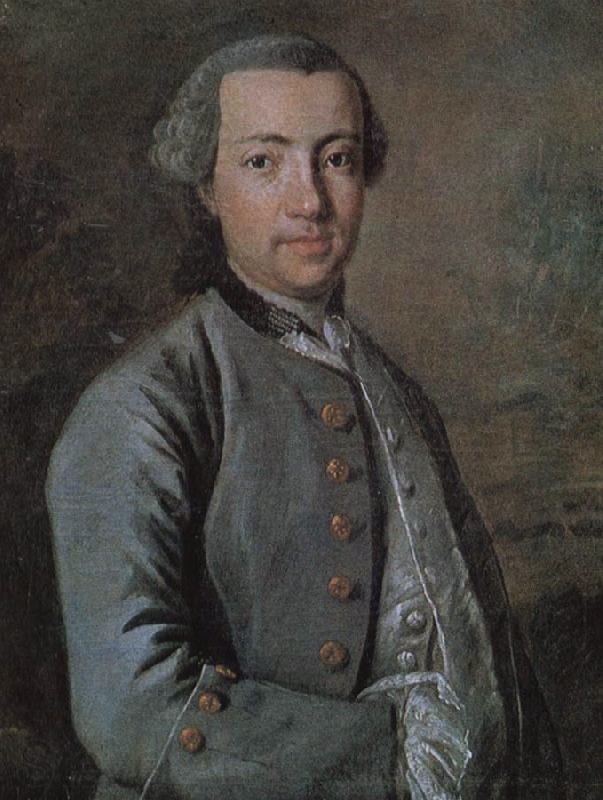
Pehr Forsskål Pehr is a predominantly Swedish language masculine give name and may refer to:
*Pehr Adlerfelt (1680–1743), Swedish Army colonel
* Pehr von Afzelius (1760–1843), Swedish medical doctor and professor
*Pehr Victor Edman (1916—1977), Swedish bi ...
(1732–1763) was born in Finland and became a student of Linnaeus when he was 18 years old. Forsskål was asked if he wanted to join a Danish expedition, commissioned by the Danish King
Frederick V Frederick V or Friedrich V may refer to:
* Frederick V, Duke of Swabia (1164–1170)
*Frederick V, Count of Zollern (d.1289)
*Frederick V, Burgrave of Nuremberg (c. 1333–1398), German noble
*Frederick V of Austria (1415–1493), or Frederick III ...
, to the Middle East. He consulted Linnaeus and was given permission to go. Although it was a Danish expedition, King Frederick V stated that the findings would not be placed in
Copenhagen
Copenhagen ( or .; da, København ) is the capital and most populous city of Denmark, with a proper population of around 815.000 in the last quarter of 2022; and some 1.370,000 in the urban area; and the wider Copenhagen metropolitan ar ...
until several international botanists, including Linnaeus, had studied them. Forsskål and the expedition sailed in the winter of 1761. Their first stop was
Alexandria
Alexandria ( or ; ar, ٱلْإِسْكَنْدَرِيَّةُ ; grc-gre, Αλεξάνδρεια, Alexándria) is the second largest city in Egypt, and the largest city on the Mediterranean coast. Founded in by Alexander the Great, Alexandri ...
, Egypt. Forsskål made many findings at
Suez
Suez ( ar, السويس '; ) is a seaport city (population of about 750,000 ) in north-eastern Egypt, located on the north coast of the Gulf of Suez (a branch of the Red Sea), near the southern terminus of the Suez Canal, having the same bou ...
and was one of the first to describe the flora and fauna of the
Red Sea
The Red Sea ( ar, البحر الأحمر - بحر القلزم, translit=Modern: al-Baḥr al-ʾAḥmar, Medieval: Baḥr al-Qulzum; or ; Coptic: ⲫⲓⲟⲙ ⲛ̀ϩⲁϩ ''Phiom Enhah'' or ⲫⲓⲟⲙ ⲛ̀ϣⲁⲣⲓ ''Phiom ǹšari''; ...
. The expedition reached Yemen in April 1763 where Forsskål found a ''
Commiphora
The genus of the myrrhs, ''Commiphora'', is the most species-rich genus of flowering plants in the frankincense and myrrh family, Burseraceae. The genus contains approximately 190 species of shrubs and trees, which are distributed throughout the ...
'' which Linnaeus was particularity interested in. However, Forsskål died of malaria on 11 July 1763 before he could deliver ''Commiphora'' to Linnaeus. Forsskål worked on ''Flora Aegyptiaco-Arabica'' and ''Descriptiones Animalis'' during the expedition. His works were published posthumously in 1775 by another expedition member.
Carsten Niebuhr
Carsten Niebuhr, or Karsten Niebuhr (17 March 1733 Lüdingworth – 26 April 1815 Meldorf, Dithmarschen), was a German mathematician, cartographer, and explorer in the service of Denmark. He is renowned for his participation in the Royal Danish ...
.
[Stöver, Dietrich Johann Heinrich (1794). pp. 176–177.]
Göran Rothman, Tunisia and Libya (1773–1776)
Göran Rothman (1739–1778) studied medicine at Uppsala University and carried out his dissertation with Linnaeus as his supervisor. In 1773 Rothman travelled to North Africa that was commissioned by the Swedish Academy of Sciences. He visited
Libya
Libya (; ar, ليبيا, Lībiyā), officially the State of Libya ( ar, دولة ليبيا, Dawlat Lībiyā), is a country in the Maghreb region in North Africa. It is bordered by the Mediterranean Sea to the north, Egypt to the east, Suda ...
and
Tunisia
)
, image_map = Tunisia location (orthographic projection).svg
, map_caption = Location of Tunisia in northern Africa
, image_map2 =
, capital = Tunis
, largest_city = capital
, ...
but was unable to go as far inland as he wished due to local unrest. He returned to Sweden in 1776 with very few findings.
[Fagerstedt and Sörlin (2004). p. 94.]
Johan Peter Falk, Russia (1768–1774)
Johan Peter Falk
Johan Peter Falk (26 November 1732 – 31 March 1774) was a Swedish botanist and an apostle of Carl Linnaeus. His first name is sometimes spelled "Johann"; his middle name is sometimes spelled "Pehr"; and his surname is sometimes spelled "Falck".
...
(1732–1774) arrived in Uppsala University in 1751 and became an apostle. He followed Linnaeus on his expedition to the island province
Gotland and later became a tutor to Linnaeus' son,
Carl. In 1760, Linnaeus encouraged Falk to follow apostle Forsskål on the Danish expedition to Egypt but Falk did not gain approval from the Danes. In 1768, the
Russian Academy of Sciences
The Russian Academy of Sciences (RAS; russian: Росси́йская акаде́мия нау́к (РАН) ''Rossíyskaya akadémiya naúk'') consists of the national academy of Russia; a network of scientific research institutes from across ...
created several expeditions to explore eastern Russia. Thanks to Linnaeus, Falk was given responsibility for one of the expeditions and headed out the same year. The expedition explored many places in Russia, including
Volgograd
Volgograd ( rus, Волгогра́д, a=ru-Volgograd.ogg, p=vəɫɡɐˈɡrat), formerly Tsaritsyn (russian: Цари́цын, Tsarítsyn, label=none; ) (1589–1925), and Stalingrad (russian: Сталингра́д, Stalingrád, label=none; ) ...
and the steppes. Falk explored and described native customs as well as both flora and fauna. During the journey Falk became addicted to opium and caused him to suffer depression throughout the expedition. In 1774 the expedition reached
Kazan
Kazan ( ; rus, Казань, p=kɐˈzanʲ; tt-Cyrl, Казан, ''Qazan'', IPA: ɑzan is the capital and largest city of the Republic of Tatarstan in Russia. The city lies at the confluence of the Volga and the Kazanka rivers, covering an ...
where Falk committed suicide. Following his death, his collections and journals were sent to
Saint Petersburg
Saint Petersburg ( rus, links=no, Санкт-Петербург, a=Ru-Sankt Peterburg Leningrad Petrograd Piter.ogg, r=Sankt-Peterburg, p=ˈsankt pʲɪtʲɪrˈburk), formerly known as Petrograd (1914–1924) and later Leningrad (1924–1991), i ...
to be later completed and published as ''Beyträga zur topografischen Kenntniss des Russichen Reichs'' in 1785–86 by Samuel Georg Gmelin.
[Fagerstedt and Sörlin (2004). pp. 74–76.][Stöver, Dietrich Johann Heinrich (1794). pp. 179–180.]
Daniel Solander, Australia etc. (1768–1771) and Iceland (1772)
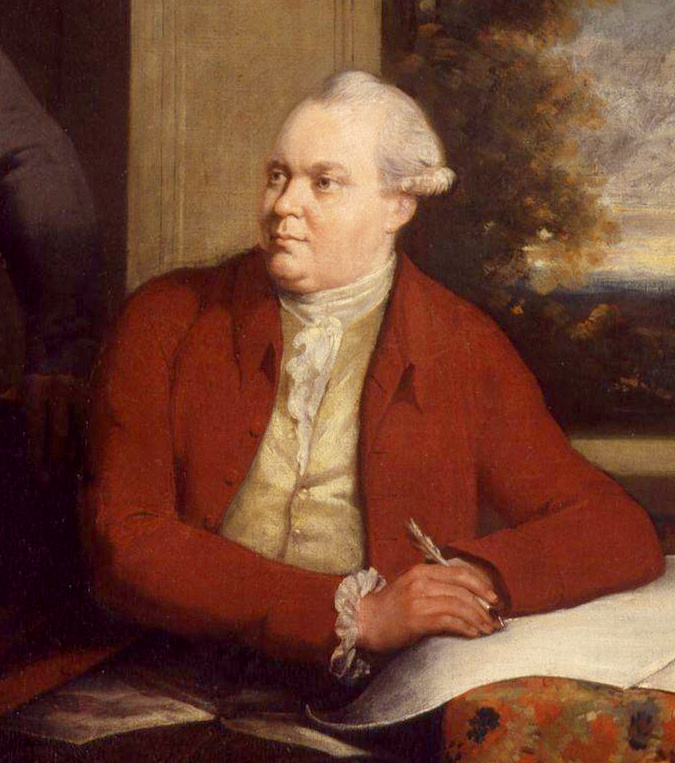
Daniel Solander
Daniel Carlsson Solander or Daniel Charles Solander (19 February 1733 – 13 May 1782) was a Swedish naturalist and an apostle of Carl Linnaeus.
Solander was the first university-educated scientist to set foot on Australian soil.
Biography ...
(1733–1782) was living in Linnaeus's house during his time as a student in Uppsala. Linnaeus was fond of him, promising Solander his eldest daughter's hand in marriage and telling Solander that he would become his successor. Based on Linnaeus's recommendation, Solander travelled to England in 1760 where he spread the
Linnaean taxonomy
Linnaean taxonomy can mean either of two related concepts:
# The particular form of biological classification (taxonomy) set up by Carl Linnaeus, as set forth in his ''Systema Naturae'' (1735) and subsequent works. In the taxonomy of Linnaeus t ...
. Two years later Linnaeus got Solander a position as professor in botany in Saint Petersburg. Linnaeus was surprised and disappointed when Solander answered that he had decided to stay in England. This damaged their relationship and thereafter Linnaeus was heard to refer to "the ungrateful Solander." In 1768 Solander was employed by the English botanist
Joseph Banks to follow
James Cook on his first journey to the Pacific Ocean aboard the ''
Endeavour''. The ''Endeavour'' sailed to Australia, Asia, Africa and several other places where Solander and Banks made many natural sciences discoveries. About a year after the expedition, in 1772, Solander and Banks made another botanical journey to Iceland. He never sent anything from his collection home to Linnaeus, but continued to organise his samples according to Linnaeus's system.
[Blunt, Wilfrid (2004). pp. 191–192.][Mary and John Gribbin (2008). pp. 58–59.]
Anders Sparrman, China (1765–1767), South Africa (1771–1772 and 1775) Oceania etc. (1772–1775) Senegal (1787)
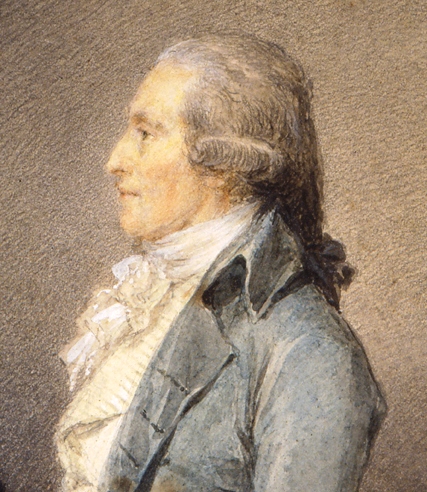
Even before he became an apostle,
Anders Sparrman
Anders Sparrman (27 February 1748, Tensta, Uppland – 9 August 1820) was a Swedish naturalist, abolitionist and an apostle of Carl Linnaeus.
Biography
left, Miniature of Sparrman at the time of his travels with James Cook. By unknown art ...
(1748–1820) had made a two-year-long journey to China as a surgeon on a Swedish East India Company ship. In 1771, he sailed to South Africa as one of Linnaeus' apostles where he tutored and explored the flora and fauna. The next year he was asked to join Cook's second expedition on ''
Resolution''. On the journey, he visited and studied plants in various locations including Oceania and South America. He returned to South Africa two years later having made many botanical findings. He stayed there for another eight months before returning to Uppsala in 1776. In 1787, he travelled to
Senegal
Senegal,; Wolof: ''Senegaal''; Pulaar: 𞤅𞤫𞤲𞤫𞤺𞤢𞥄𞤤𞤭 (Senegaali); Arabic: السنغال ''As-Sinighal'') officially the Republic of Senegal,; Wolof: ''Réewum Senegaal''; Pulaar : 𞤈𞤫𞤲𞤣𞤢𞥄𞤲𞤣𞤭 ...
on an expedition to find land for colonisation. He published his travel diary ''Resa till Goda Hopps-Udden, södra Polkretsen och omkring Jordklotet, samt till Hottentott- och Caffer-Landen Åren 1772-1776'' in three volumes, 1783-1818.
[Blunt, Wilfrid (2004). pp. 192–193.]
Carl Peter Thunberg, South Africa, Japan etc. (1770–1779)
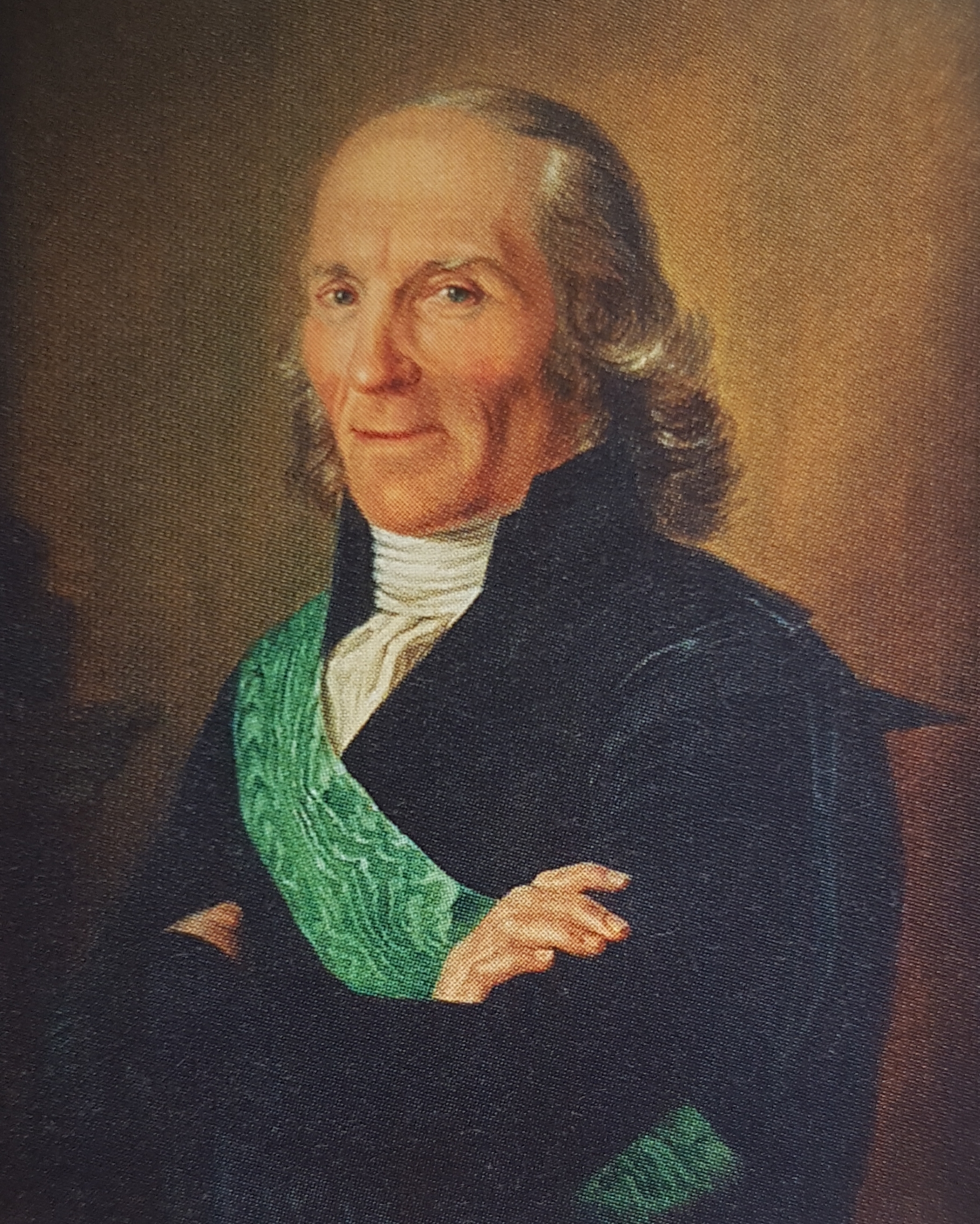
Just like Linnaeus,
Carl Peter Thunberg (1743–1828) arrived in Uppsala at the age of 18. Having completed his dissertation in 1770, he travelled to Paris. On the way back to Sweden he met Linnaeus' friend
Johannes Burman
Johannes Burman (26 April 1707 in Amsterdam – 20 February 1780), was a Dutch botanist and physician. Burman specialized in plants from Ceylon, Amboina and Cape Colony. The name ''Pelargonium'' was introduced by Johannes Burman.
Johannes ...
in Amsterdam. With Burman's influence, Thunberg became a surgeon in the
Dutch East India Company
The United East India Company ( nl, Verenigde Oostindische Compagnie, the VOC) was a chartered company established on the 20th March 1602 by the States General of the Netherlands amalgamating existing companies into the first joint-stock ...
. He joined an expedition heading to Japan, which at that time was only open for Dutch ships. The expedition stopped in South Africa in 1772 where it remained for three years. During this time Thunberg found 300 new plant species and sent many of his findings to Linnaeus. In 1775, the expedition continued to Java and then to Japan. All foreigners in Japan were forced to stay on the
Dejima
, in the 17th century also called Tsukishima ( 築島, "built island"), was an artificial island off Nagasaki, Japan that served as a trading post for the Portuguese (1570–1639) and subsequently the Dutch (1641–1854). For 220 years, i ...
island, outside
Nagasaki
is the capital and the largest Cities of Japan, city of Nagasaki Prefecture on the island of Kyushu in Japan.
It became the sole Nanban trade, port used for trade with the Portuguese and Dutch during the 16th through 19th centuries. The Hi ...
, so it was difficult for Thunberg to study the mainland flora. However, he got many translators to bring him some mainland specimens to add to those plants he found in the gardens of Dejima. The only time Thunberg could explore the Japanese landscape was when he visited the ''
shōgun
, officially , was the title of the military dictators of Japan during most of the period spanning from 1185 to 1868. Nominally appointed by the Emperor, shoguns were usually the de facto rulers of the country, though during part of the Kamak ...
'' in
Edo. After 15 months, he returned to Sweden, passing
Sri Lanka on the way. From his findings in Japan, Thunberg published ''Flora Japonica''. From his findings in South Africa, he published ''Flora Capensis''.
[Blunt, Wilfrid (2004). pp. 193–194.]
Andreas Berlin, Guinea (1773)
Andreas Berlin
Andreas (Anders) Berlin (20 May 1746 – 12 June 1773) was a naturalist, one of the "apostles of Linnaeus", though not among the more successful.
The son of Henrik Berlin (1704–1781) and his wife Anna Catharina Hellström (1711–1799), Berlin m ...
(1746–1773) studied in Uppsala University with Linnaeus as his student before travelling to London to find a botanical expedition he could join. In 1773 he travelled to Guinea with the English naturalist Henry Smeathman. The purpose of the expedition was to explore the central parts of Africa but prior to reaching the mainland, Berlin died of a stomach illness while on the
Îles de Los
Îles de Los are an island group lying off Conakry in Guinea, on the west coast of Africa. Their name is derived from the Portuguese: ''Ilhas dos Ídolos'', "Islands of the Idols". They are located about off the headland limiting the southern ...
. Before his death, Berlin managed to send a few plants to Linnaeus.
[Fagerstedt and Sörlin (2004). pp. 10–13.]
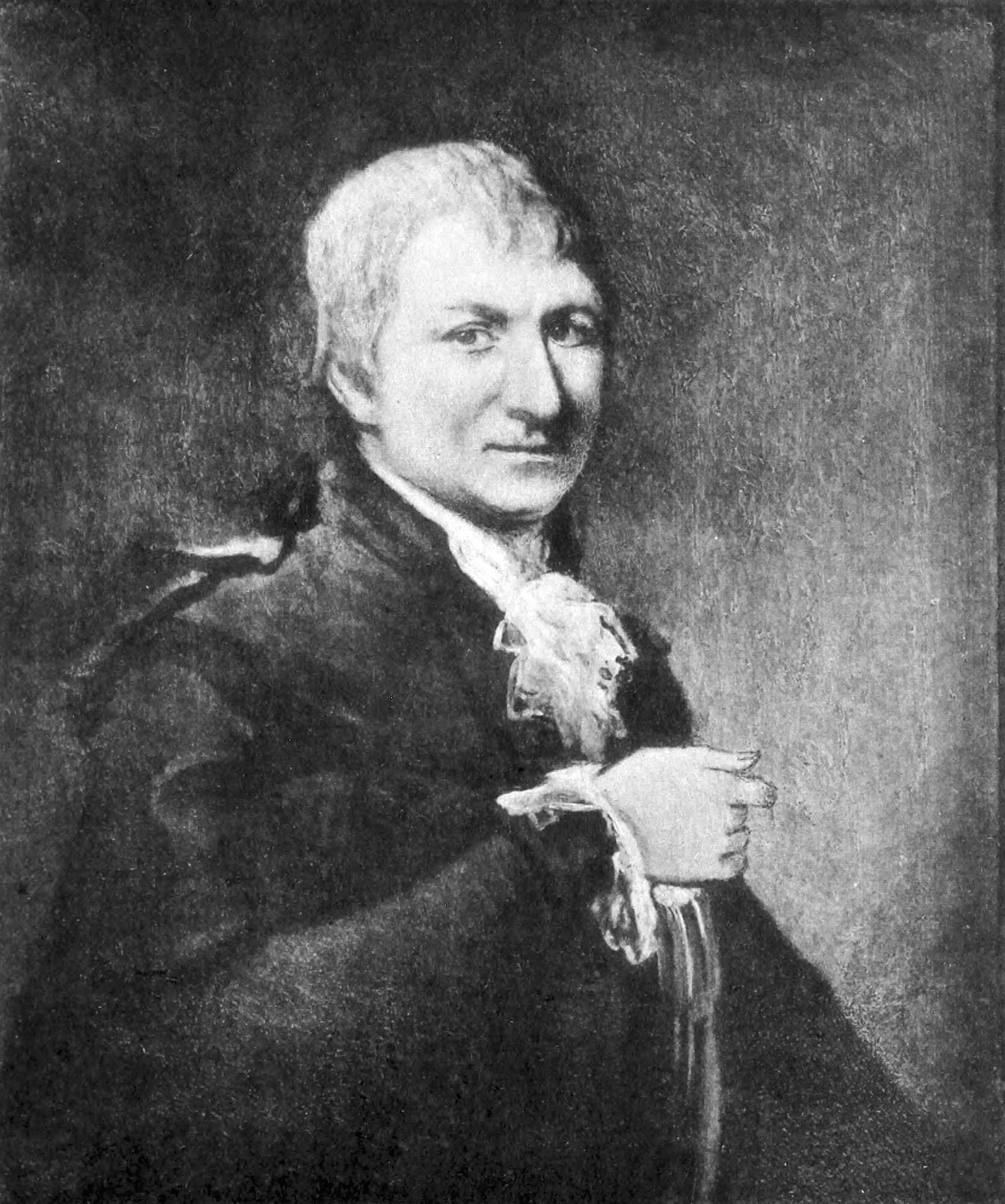
Adam Afzelius, Sierra Leone (1792–1796)
Adam Afzelius
Adam Afzelius (8 October 175020 January 1837) was a Swedish botanist and an apostle of Carl Linnaeus. Afzelius was born at Larv in Västergötland in 1750. He was appointed teacher of oriental languages at Uppsala University in 1777, and in 17 ...
(1750–1837) joined an English expedition to
Sierra Leone
Sierra Leone,)]. officially the Republic of Sierra Leone, is a country on the southwest coast of West Africa. It is bordered by Liberia to the southeast and Guinea surrounds the northern half of the nation. Covering a total area of , Sierr ...
in 1792 after studying and lecturing in Uppsala. He returned in 1796 having found many new samples, which he described in some of his botanical writings. He also published Linnaeus' autobiography.
References
Notes
Bibliography
*
*
*
*
*
* Hansen, Lars (editor-in-chief), ''The Linnaeus Apostles – Global Science & Adventure''. 8 vols. 11 books. London & Whitby: The IK Foundation & Company, 2007–2011. .
{{authority control
Carl Linnaeus
Lists of biologists
 The Apostles of Linnaeus were a group of students who carried out
The Apostles of Linnaeus were a group of students who carried out 




 Even before he became an apostle,
Even before he became an apostle,  Just like Linnaeus, Carl Peter Thunberg (1743–1828) arrived in Uppsala at the age of 18. Having completed his dissertation in 1770, he travelled to Paris. On the way back to Sweden he met Linnaeus' friend
Just like Linnaeus, Carl Peter Thunberg (1743–1828) arrived in Uppsala at the age of 18. Having completed his dissertation in 1770, he travelled to Paris. On the way back to Sweden he met Linnaeus' friend 